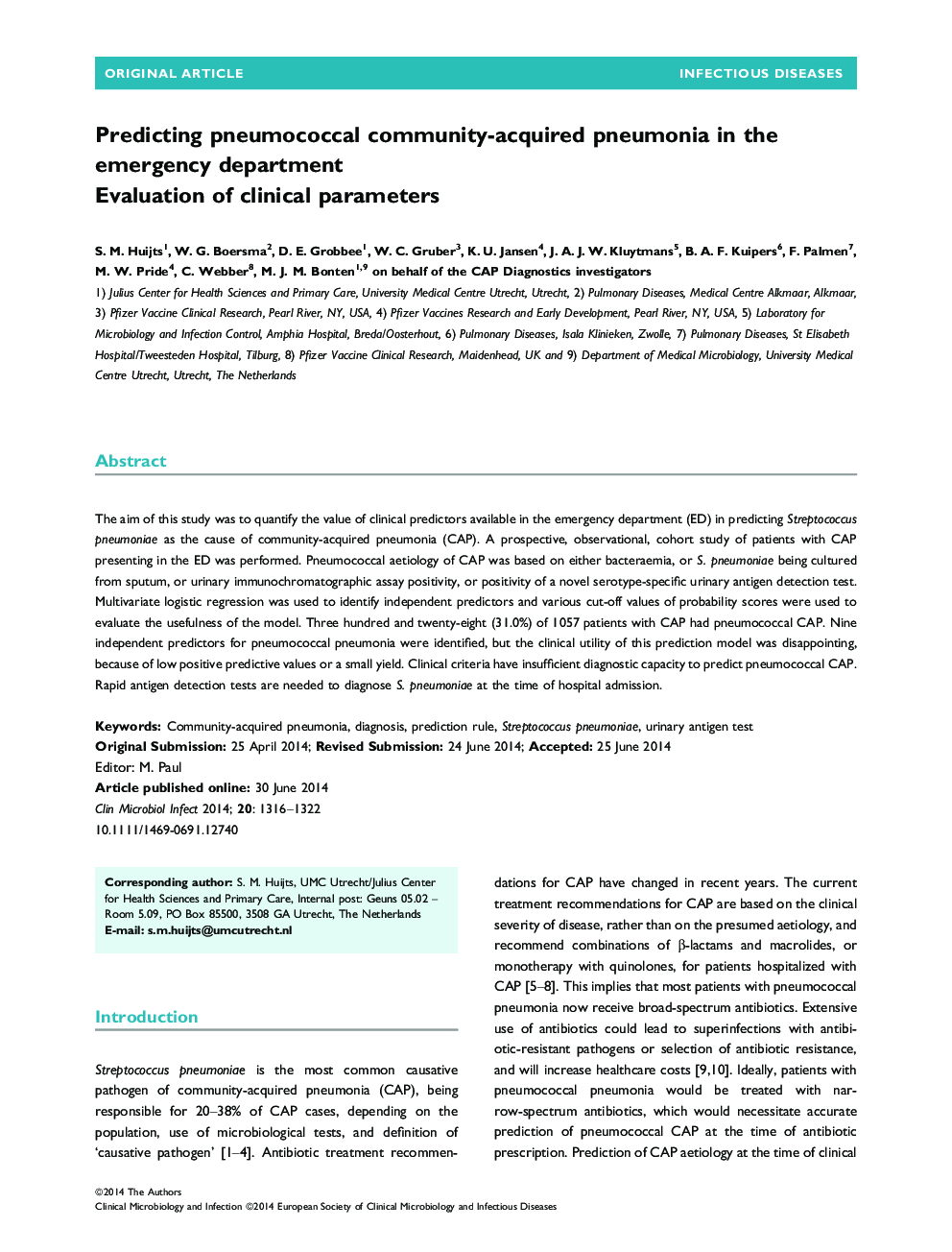| Article ID | Journal | Published Year | Pages | File Type |
|---|---|---|---|---|
| 6129780 | Clinical Microbiology and Infection | 2014 | 7 Pages |
Abstract
The aim of this study was to quantify the value of clinical predictors available in the emergency department (ED) in predicting Streptococcus pneumoniae as the cause of community-acquired pneumonia (CAP). A prospective, observational, cohort study of patients with CAP presenting in the ED was performed. Pneumococcal aetiology of CAP was based on either bacteraemia, or S. pneumoniae being cultured from sputum, or urinary immunochromatographic assay positivity, or positivity of a novel serotype-specific urinary antigen detection test. Multivariate logistic regression was used to identify independent predictors and various cut-off values of probability scores were used to evaluate the usefulness of the model. Three hundred and twenty-eight (31.0%) of 1057 patients with CAP had pneumococcal CAP. Nine independent predictors for pneumococcal pneumonia were identified, but the clinical utility of this prediction model was disappointing, because of low positive predictive values or a small yield. Clinical criteria have insufficient diagnostic capacity to predict pneumococcal CAP. Rapid antigen detection tests are needed to diagnose S. pneumoniae at the time of hospital admission.
Keywords
Related Topics
Life Sciences
Immunology and Microbiology
Microbiology
Authors
S.M. Huijts, W.G. Boersma, D.E. Grobbee, W.C. Gruber, K.U. Jansen, J.A.J.W. Kluytmans, B.A.F. Kuipers, F. Palmen, M.W. Pride, C. Webber, M.J.M. Bonten, on behalf of the CAP Diagnostics investigators on behalf of the CAP Diagnostics investigators,
